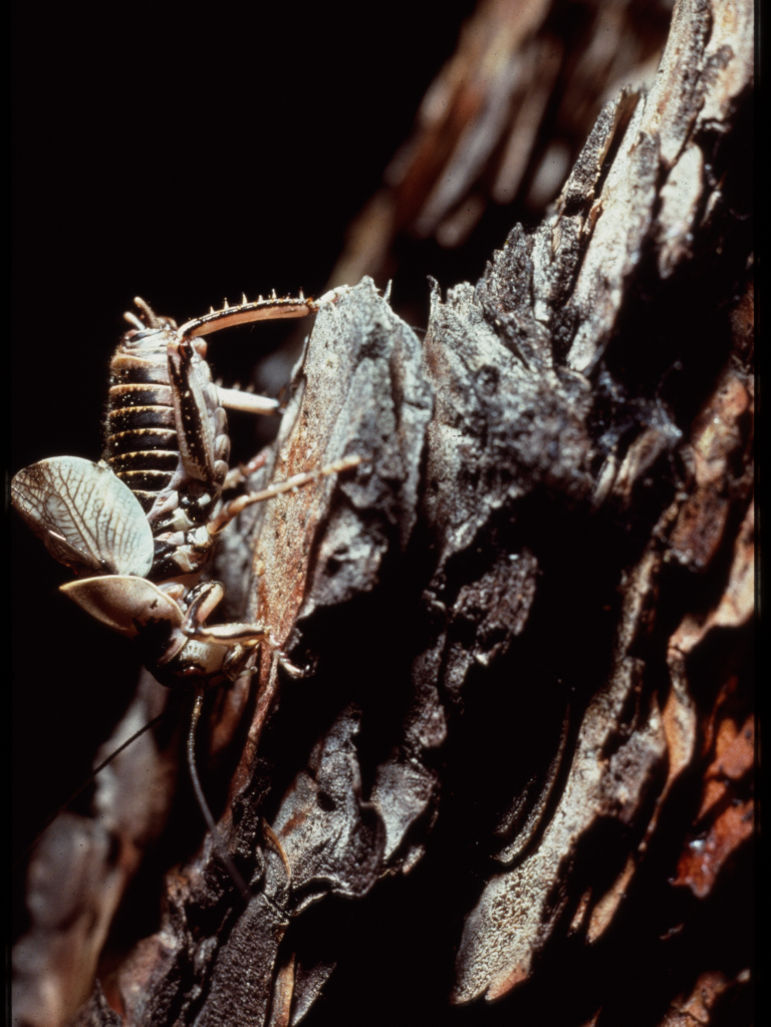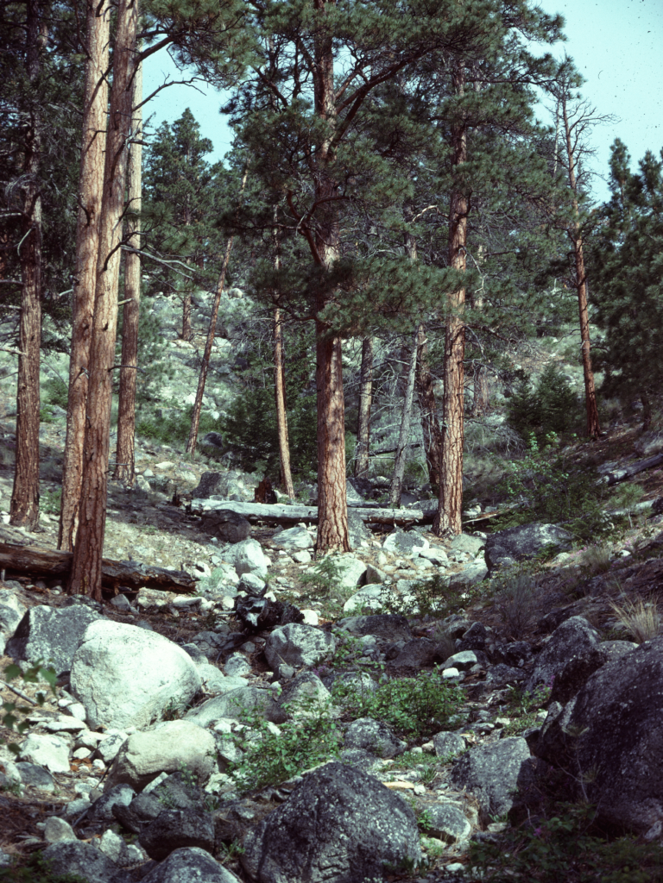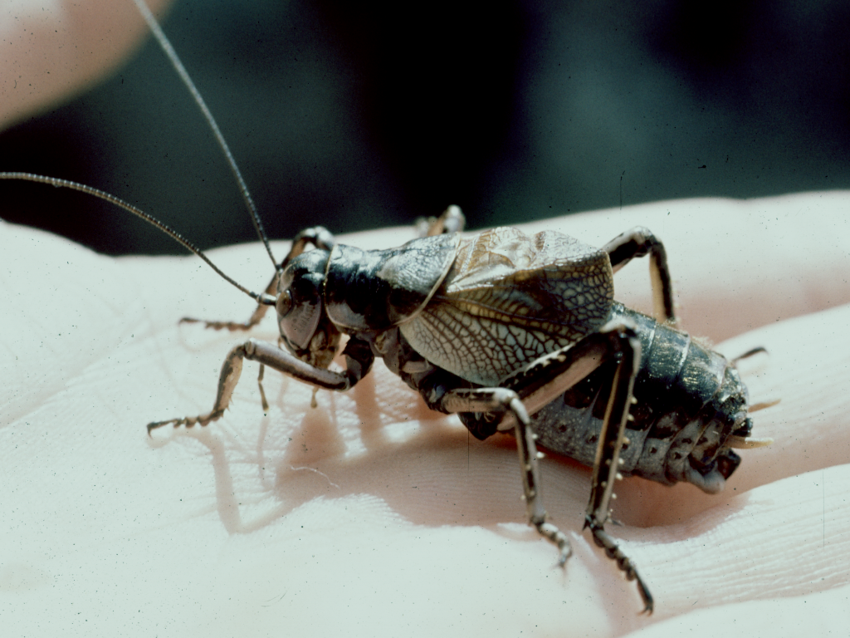Cyphoderris is a genus of primitive Orthoptera ancestral to katydids. A relict distribution leaves 3 species in the northwest of NA: C. monstrosa, C. buckelli and C. strepitans. They spend the day in ground litter, emerging at night to feed on flowers (Balsamorhiza, Amelanchier, Pinus). Males of C. monstrosa climb up the trunks of pine trees from which they call and also engage other males in fights. Mature females climb to feed on the pollen of the staminate cones. Defending a tree trunk is a way for males to gain access to mates.
This photo shows a number of mature ponderosa pines in a gully in Monck Provincial Park, BC, Canada. Beginning in the mid 1970s with the help of my father, Jack Morris, Ron Aiken and James Fullard I studied a population of C. monstrosa here in the Nicola Valley beside Nicola Lake. As dusk came on the insects emerged from the forest litter and climbed the tree trunks and began to sing.
A handfull of Cyphoderris monstrosa: the species is quite large (larger than the other Cyphoderris spp.) which relates to the fact that successful fighting is beneficial. Though male Cyphoderris have forewings, these are quite shortened and only used in stridulation. These tegmina are morphological mirror images and each wing has both a scraper and file equally developed. In singing the insect can reverse tegminal overlap and often does.

Cyphoderris buckelli sings head down on a Douglas fir trunk at night near Kelowna BC. Photo G
The song of C. buckelli is a long series of irregularly interrupted musical pulses near 13 kHz. Pulses, each the acoustic result of a file stroke, recur with strong stereotypy (low variance in pulse rate, pulse period etc.) suggesting strong selection for repeatability; this very invariant signal is perhaps a way of overcoming ambient noise. The male's broadcast is employed as a beacon by an attracted female, so song stereotypy could be a way of overcoming noise using redundancy. The recording below was made originally at 21.9C, but has been slowed here by a factor of 8 to bring it within the low audio range of computer speakers: what is 13000 Hz in real time is now about 1.6 kHz.


